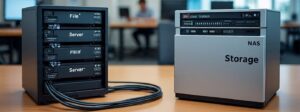
Smart Cities in 2025: The Future of Urban Living

Introduction: Cities That Think for Themselves
Imagine a city that predicts traffic jams before they happen, streetlights that brighten only when needed, and garbage trucks that come only when bins are full. Welcome to smart cities in 2025 – where technology makes urban life cleaner, safer, and more efficient for everyone.
This easy-to-understand guide explains:



What Is a Smart City? (Explained for Everyone)
A smart city is like giving a regular city a digital brain. It uses sensors, data, and automation to make urban life easier, cheaper, and greener. Think of it as a city that “listens” and “adapts” to fix problems before they get worse.
How Smart Cities Work (With Real Examples)
1. Sensors: The City’s “Nervous System”
Tiny, connected sensors track things like:
-
Traffic flow → Adjusts stoplights in real time to reduce jams (e.g., Los Angeles cut traffic delays by 12%)
-
Air quality → Alerts residents when pollution spikes (e.g., Beijing’s smart air monitors)
-
Trash levels → Sends garbage trucks only when bins are full *(e.g., Barcelona saves $3.5M/year this way)*
2. Data: The City’s “Memory”
Computers analyze patterns to predict and prevent problems:
-
Flood risk? → Singapore uses rainfall data to direct stormwater away from streets.
-
Potholes? → Detroit’s AI scans road photos to prioritize repairs.
-
Energy waste? → Amsterdam’s smart grids cut power use during low demand.
3. Automation: The City’s “Muscles”
Machines handle repetitive tasks so humans don’t have to:
-
Streetlights dim when no one’s around (Copenhagen saves 70% on energy)
-
Self-driving buses fill transit gaps *(Las Vegas has 24/7 autonomous shuttles)*
-
Robot water leaks detectors save millions of gallons (South Korea reduced pipe leaks by 20%)
Why Smart Cities Matter
-
Save money: Predictive maintenance cuts taxpayer costs.
-
Save lives: Faster emergency response via traffic-clearing AI.
-
Save the planet: Less congestion = cleaner air.
(Example: Tokyo’s smart power grid helped avoid blackouts after earthquakes.)
Smart City Tech You’re Probably Already Using
Did you know you might already be using smart city technology without realizing it? These everyday tools make city living smoother while saving time and reducing stress. Here are 3 common examples:
-
Contactless Transit Payments (Your Phone = Metro Pass)
-
How it works: Instead of paper tickets or plastic cards, just tap your phone/watch on the turnstile
-
Why it’s smart: Reduces lines, cuts plastic waste, and even adjusts fares automatically
-
Where you’ve seen it: London’s Oyster, NYC’s OMNY, or Singapore’s SimplyGo
-
Bonus: Some systems (like Chicago’s) automatically cap daily fares so you never overpay
-
-
Air Quality Apps (Weather Forecast for Pollution)
-
How it works: Sensors across the city track pollutants, sending real-time alerts
-
Why it’s smart: Helps asthma sufferers avoid bad air days, nudges cities to clean up hotspots
-
Where you’ve seen it:
-
Plume Air Report (used in Paris)
-
AirVisual’s street-level maps (popular in Delhi)
-
-
Life hack: Some apps (like BreezoMeter) suggest cleaner walking routes
-
-
Parking Finder Apps (No More Circling the Block)
-
How it works: Sensors in parking spots update apps in real-time
-
Why it’s smart:
-
Reduces “parking cruise” traffic by up to 30%
-
Shows pricing so you can pick cheaper lots
-
-
Where you’ve seen it:
-
SpotHero in Chicago
-
ParkMobile in Miami
-
-
Pro tip: Some cities (like San Francisco) adjust prices based on demand – arrive early to save
-
Why This Matters:
These aren’t just conveniences – they’re proof that smart city tech actually works. When cities implement them well:
-
Commutes get shorter (London saved 1 million+ hours annually with contactless transit)
-
People breathe easier (Seoul reduced pollution alerts by 15% after launching air apps)
-
Tempers stay cooler (Boston drivers reported 40% less parking frustration)
The Best Part?
You don’t need to understand the tech to benefit – it just quietly makes city life better. What smart city feature would you miss most if it disappeared tomorrow?
5 Smart City Technologies Changing Urban Life by 2025
1. Intelligent Traffic Systems
2025 Vision:
-
Traffic lights that adjust in real-time to reduce jams
-
Emergency vehicles that automatically get green lights
Working Now:
-
Singapore has reduced traffic delays by 25% with smart signals
-
Los Angeles uses AI to optimize 4,500 traffic lights
2. Smart Energy Grids
Coming Soon:
-
Buildings that share excess solar power with neighbors
-
Streetlights that dim when no one’s around
Current Example:
-
Copenhagen streetlights save 80% energy using motion sensors
3. Automated Waste Management
Smart Solutions:
-
Solar-powered trash compactors that alert when full
-
Underground waste systems that eliminate dumpsters
Real Implementation:
-
Seoul, South Korea reduced waste collection costs by 83%
4. Digital Government Services
2025 Standard:
-
License renewals in 5 minutes via smartphone
-
AI chatbots handling 80% of citizen questions
Already Working:
-
Estonia’s e-Residency program allows global digital citizenship
5. Urban Air Mobility
Future Transportation:
-
Electric air taxis for short hops across town
-
Delivery drones for medicine and groceries
Testing Now:
-
Dubai plans air taxi routes by 2025
How Smart Cities Actually Work: A Behind-the-Scenes Look
Imagine your city as a giant, interconnected machine that can see, think, and react. Here’s the simple breakdown of how smart cities function in everyday life:
-
The Nervous System: Sensors Everywhere
-
Traffic cameras that count vehicles in real-time
-
Noise monitors that map sound pollution hotspots
-
Smart meters tracking water and electricity usage
-
Example: In Barcelona, garbage bins have fill-level sensors that optimize collection routes
-
-
The Brain: AI Analysis
-
Processes data from thousands of sensors simultaneously
-
Detects patterns humans might miss (like that intersection where accidents happen most)
-
Predicts future problems before they occur
-
Example: Singapore’s traffic AI reduced congestion by 15% by adjusting signals in real-time
-
-
The Reflexes: Automatic Adjustments
-
Streetlights that brighten when they detect pedestrians
-
Irrigation systems that water parks only when needed
-
Traffic signals that change timing based on actual flow
-
Example: Copenhagen’s smart lighting saves enough energy to power 1,000 homes annually
-
-
The Interface: Citizen Apps
-
Real-time public transit updates
-
Instant reporting for potholes or broken streetlights
-
Digital payment for all city services
-
Example: NYC’s 311 app handles 50,000+ service requests daily
-
Real-World Scenario: The Smart Parking Experience
-
You drive downtown (sensors note increased traffic)
-
Your app shows 3 available spots 2 blocks away (updated in real-time)
-
You park (camera verifies your license plate)
-
App automatically charges your account (no meter needed)
-
System notes lot is now full, updates other drivers
Why This Matters:
-
Saves time (no more circling for parking)
-
Reduces pollution (less idling traffic)
-
Cuts costs (efficient city services)
-
Improves safety (faster emergency response)
The Hidden Bonus: These systems keep learning. The more data they collect, the better they optimize city life. In Seoul, smart traffic systems improved commute times by 18% over five years through constant adjustments.
Why Smart Cities Matter to You
For Residents:
-
30% less time stuck in traffic
-
Cleaner air and water
-
Faster emergency response
For Businesses:
-
Lower operating costs
-
Better infrastructure
-
New tech job opportunities
For the Environment:
-
20-30% energy savings citywide
-
Reduced carbon emissions
Addressing Common Concerns
Privacy Question:
“Are we being watched everywhere?”
-
Smart cities use anonymous aggregate data (not personal tracking)
-
Strict data protection laws (like GDPR) apply
Cost Concern:
“Can we afford this?”
-
Most projects pay for themselves in 3-5 years through savings
-
Barcelona saved €75 million annually with smart water systems
The Future Beyond 2025
-
Self-Repairing Infrastructure: Potholes that fix themselves
-
Augmented Reality City Guides: Digital overlays showing directions/history
-
Vertical Smart Farms: Skyscrapers growing food for the city
How Cities Are Preparing Now
-
Pilot Projects: Testing technologies in specific districts
-
Public Wi-Fi: Building connectivity foundations
-
Citizen Education: Teaching residents to use new tools
5 Ways Smart Cities Will Make Your Life Better (Without You Noticing)
1. Your Commute: Less Traffic, Cleaner Air
-
Smart traffic lights that adjust in real-time to prevent jams (like in Pittsburgh, where they reduced travel time by 25%)
-
Electric bus fleets that charge at optimal times to save energy
-
Bike lanes that glow at night when sensors detect cyclists
You’ll experience: Shorter trips and fresher air – London’s smart systems already prevent 1.1 million tons of CO2 annually
2. Your Bills: Lower Utility Costs
-
Smart water grids that detect leaks instantly (saving cities like Barcelona 25% on water)
-
Electricity that costs less when demand is low (with automatic home adjustments)
-
Waste collection only when your bin is actually full
You’ll experience: Savings without effort – Philadelphia’s smart meters helped residents cut energy bills by 10%
3. Your Safety: Instant Emergency Help
-
Gunshot detection systems that alert police within seconds
-
Streetlights that brighten when sensors detect someone running
-
Flood sensors that warn before your basement is at risk
You’ll experience: Faster response – Chicago’s smart system reduced emergency times by 2 minutes
4. Your Time: No More Paperwork
-
Auto-renewing permits through city apps
-
Digital signatures for all government services
-
Appointment systems that know wait times in real-time
You’ll experience: What used to take hours now takes minutes – Estonia’s digital services save citizens 11 working days/year
5. Your Health: Cleaner Surroundings
-
Air quality alerts that ping your phone before pollution peaks
-
Noise monitoring that identifies harmful sound levels
-
Smart parks that track pollen counts in real-time
You’ll experience: Fewer allergies and breathing problems – Seoul’s air quality warnings reduced ER visits by 17%
The Best Part?
These improvements happen automatically in the background. You won’t need to learn new tech – just enjoy shorter lines, cleaner streets, and more money in your pocket.
Which of these would improve your life most? In many cities, some are already happening – you might be benefiting right now without realizing it!
Final Thought: Cities That Care
Smart cities aren’t about technology for technology’s sake – they’re about using innovation to make urban life better for everyone. By 2025, these advancements will start becoming invisible helpers in our daily routines.




